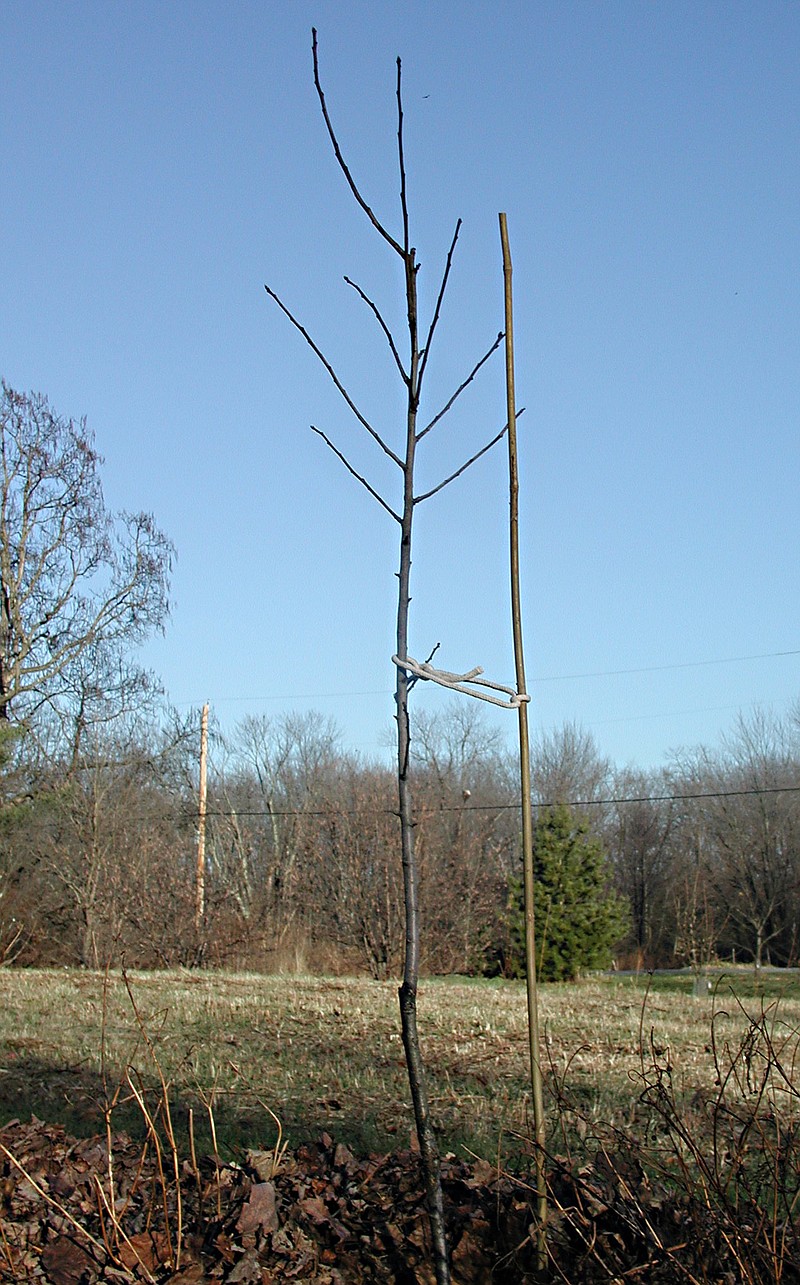To stake or not to stake?
Too many gardeners answer this question in the affirmative. Who doesn't want to lend support to a wispy, young tree?
And there are situations when a tree can use some mechanical aid - but not as often as you might imagine. Even when staking is beneficial, it is usually so only for a relatively brief period of time.
Staking can be harmful
Staking a tree that does not need it can do more harm than good. The trunk's natural movement helps bulk it up, strengthening it, and also stimulates root growth.
A staked tree might grow taller than its unstaked counterpart, but it will have a weaker trunk and sparser roots.
Incorrect staking can cause further problems. The tie could girdle the trunk or cause abrasion, and movement above the tie can make the trunk grow thicker there or cause the top of the tree to blow off. Guy wires could trip you as you dash across your yard. And face it: Staking looks unnatural.
Staking can be beneficial
When is staking beneficial? To protect the trunk, anchor the roots, and/or support the trunk.
Stakes circling a trunk, whether or not they are supporting it, can prevent "lawnmower-itis," a common hazard to trees young and old. A minimum of three stakes near the trunk are needed for protection. (Likewise, a ring of mulch at the base of a tree protects the trunk by eliminating the need for a lawnmower to venture near it. Mulches also keep weeds or grass from competing with young trees for nutrients and water.)
A young tree needs its root ball held motionless in the soil until new roots grow. If the root ball moves when you move the trunk, staking is needed.
It's also needed if the unsupported trunk flops down (the sign of a poorly grown nursery tree), or if the crown is so dense that wind will catch it and pull the tree up out of the ground.
Correct staking
Support for any young tree should let its top move freely and allow for some trunk movement, all without causing abrasion where the trunk is tied to the stake. A single tie - a bicycle inner tube works well - is usually sufficient and allows some trunk movement below it, lessening stress at that point and helping to strengthen the whole trunk.
Don't restrain a tree more than two-thirds of the way up its trunk.
A single stake on the side of the prevailing wind may suffice for a small tree whose trunk is less than a couple of inches in diameter. For a larger tree, up to 4 inches in diameter, use two to three stakes. Still larger trunks could be supported by sturdy stakes, by three guy wires attached to low stakes or, where more anchorage is needed, to earth anchors buried or screwed into the ground.
When staking is necessary, the sooner the stake or stakes are removed, the sooner the plant can develop a strong trunk and root system. With most small trees, remove stakes after one year; larger trees might require stakes left in place for two years. There are exceptions: Certain dwarf apple trees, for example, require staking throughout their life.
Still, for most trees, a major hazard of staking is forgetting about it. Ties left in place might eventually girdle the trunk or delay its development.
So stake if necessary. Do it correctly. And remember to remove stakes.
